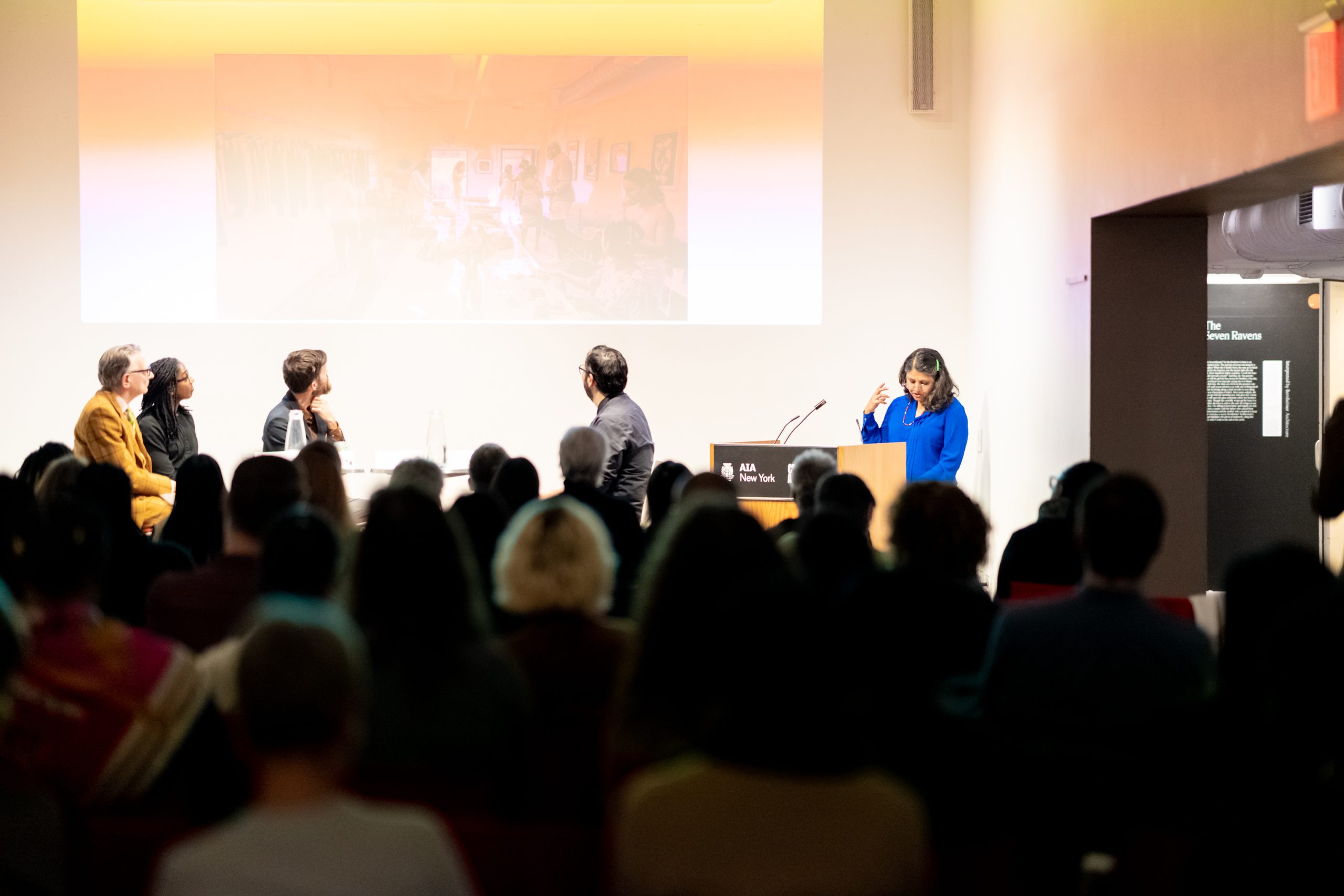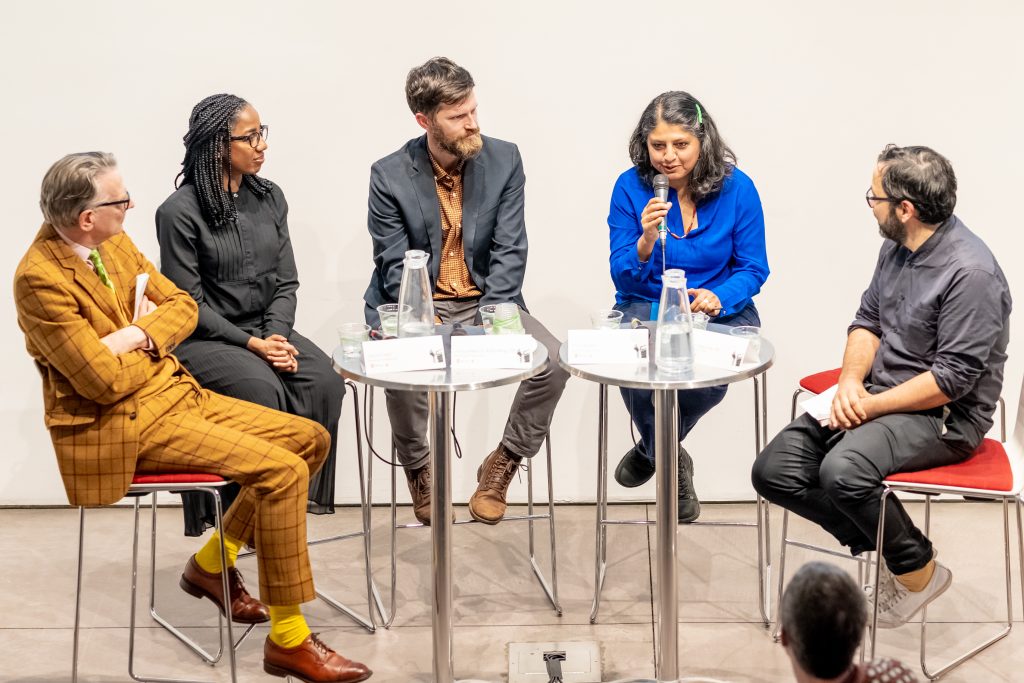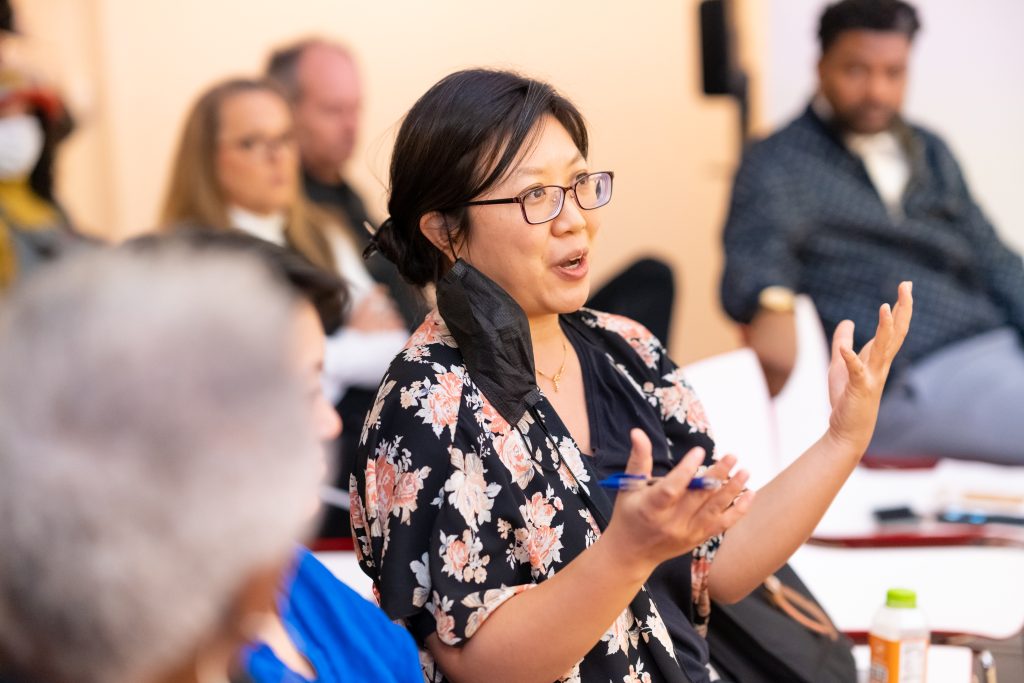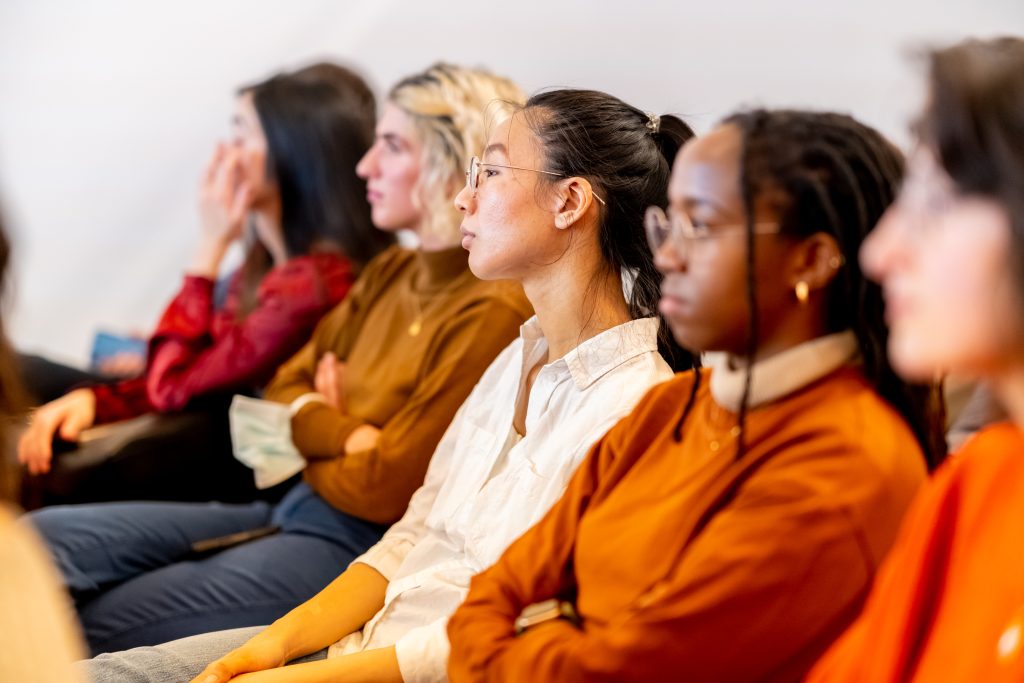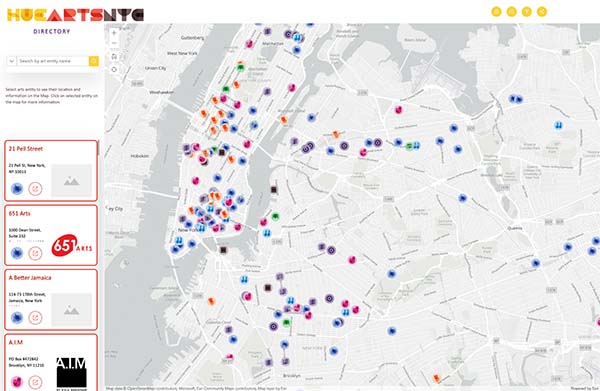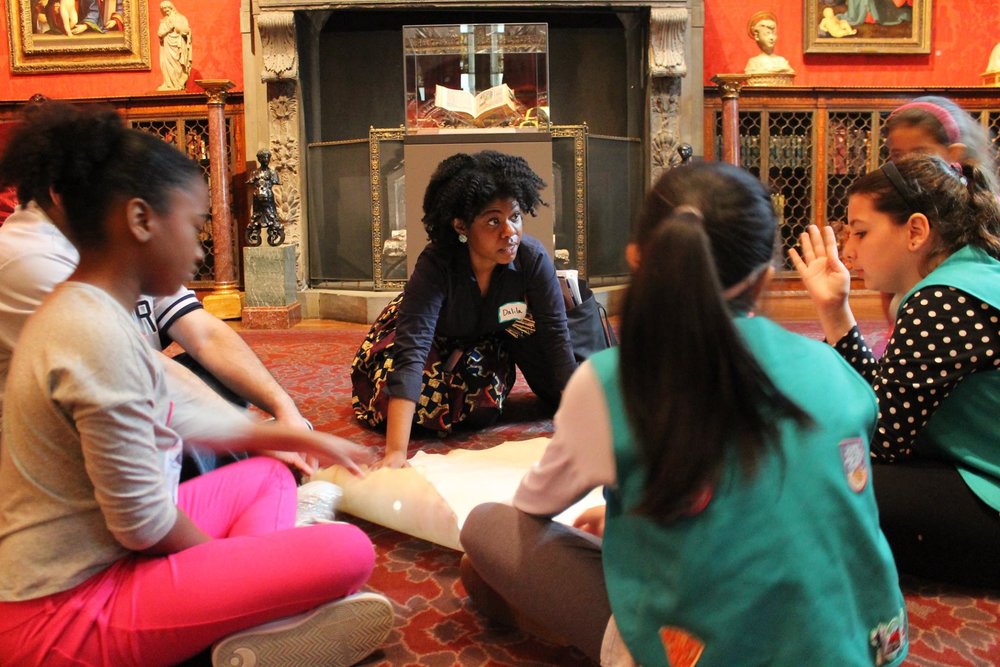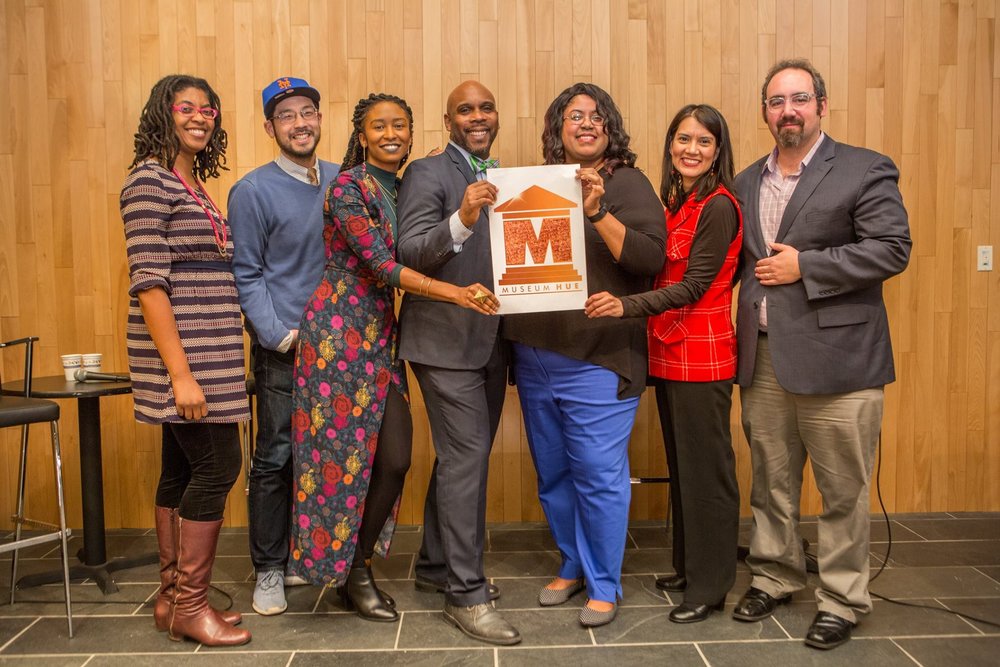Founded in 2015, Museum Hue has become a nationally recognized organization providing support to and recognition of Black, Indigenous, and People of Color (BIPOC) throughout museums and other cultural entities across the United States. By partnering and collaborating with existing museum and cultural organizations on educational initiatives, seminars, networking, and professional development, Museum Hue has created meaningful differences in the arts and cultural field.
Executive Director, Stephanie Johnson-Cunningham, cofounded Museum Hue in 2015 as a collective for BIPOC museum professionals and to address the lack of representation of Black and other people of color. She started by creating opportunities for discussion through guided experiences and gatherings at museums. In the beginning, it was mostly museum professionals but it quickly grew to include other professionals. The first outing was hosted by the Metropolitan Museum of Art’s first Black Chair of Education, Sandra Jackson-Dumont. Thirty people met in the space and talked about a wide variety of issues from anti-Blackness in Egyptology to the museum’s Diversity, Equity, and Inclusion initiative.
Johnson-Cunningham is a museum professional with over 15 years in arts education at the New-York Historical Society, the Brooklyn Museum, 9/11 Memorial and Museum, and the African American Museum in Philadelphia. She explained that Museum Hue is based in Brooklyn but has national reach. Currently, there are 400 institutional members, museums and university departments, libraries, and science centers from around the country whose contributions are based on the organization’s budgets. The benefits to the members, individuals as well as institutions, began as opportunities to share job openings with the Hue network as well as access to programs and education.
Museum Hue’s leadership is working hard to advocate for BIPOC arts professionals through substantiated research. Thus far, it has received recognition and support for its initiative and data-driven projects, HueArts New York City and New York State.
The framework of HueArts was created in 2021 to study arts entities founded, led by, and centered on Black, Latinx, Indigenous, Asian, Pacific Islander, Middle Eastern, and all People of Color (POC) as a New York City project. Museum Hue worked on this in partnership with The Laundromat Project (an arts organization that advances artists and neighbors as change agents in their own communities) and Hester Street (an urban planning, design and community development nonprofit working so that neighborhoods are shaped by their people).
As a result of this cooperation, in 2022, Museum Hue released HueArts NYC, a first-of-its-kind map, directory, and accompanying Brown Paper report containing research findings and recommendations seeking to create a dynamic, data-driven online resource. It spotlights BIPOC-founded and led arts entities and aggregates information about these entities to promote greater visibility, and support for their work within communities of color and their contributions to the field.
For example, the report highlights the example of Hip Hop which this year is celebrating its 50th anniversary. The Bronx is known as the birthplace of hip-hop, a cultural movement that spans music, visual art, and dance. Since the 1970s, this genre has grown into a multibillion-dollar industry. Yet the areas of the Bronx where this creative renaissance occurred remain one of the poorest congressional districts in the nation. That is not a coincidence, says the Report: Art forms created by marginalized communities, and particularly by People of Color, are continuously removed from their origins and commodified by the white mainstream. The Report does point out however that art continues to thrive in the Bronx despite the challenges. The Bronx Academy of Arts and Dance (BAAD!) is very successful and has contributed to the Report and its research.
As the first HueArts map was so well received, Museum Hue received support from the New York State Council in the Arts to expand to upstate New York. The newly published HuesArts NYS map, directory and report examines BIPOC-led arts and cultural entities across New York State outside of the five boroughs. The accompanying Brown Paper report brings to light the unique challenges BIPOC-led arts organizations in upstate New York face. Importantly, many of the upstate museums and cultural centers play unique roles in preserving culture, traditions, and histories of Black and Indigenous communities. Through the HueArts initiative over 500 BIPOC arts entities have been identified.
Notable findings from the survey include: 66% of the BIPOC-led arts entities surveyed operate on budgets of under $100,000 and 52% operate on budgets of under $50,000. Of those surveyed, 37.5% never received any federal, state, or municipal grants; 93.3% operate with zero “rainy day” or reserve funds; 75% have one or very few full-time staff members; 93.3% operate with zero “rainy day” or reserve funds. The report also has recommendations that New York state policymakers, funders, and leaders can follow.
The report states that the intention of HueArts NYS helps to bring greater awareness of these arts entities’ incredible work and encourages opportunities and partnerships to bring them together. Arts entities, such as Ma’s House, located on the ancestral lands of the Shinnecock People within what is now Long Island; the Southampton African American Museum, which was originally a Black-owned barbershop; and Frontline Arts Buffalo, a partnership of four organizations: African American Cultural Center, El Museo, Locust Street Art, and Ujima Company, are all thriving thanks to partnership and collaboration.
Cunningham-Johnson said they hope to use this report to continue advocacy and to achieve greater equity within the arts across New York State and throughout the country. “Museum Hue is currently asking for $100 million from the City, State, and private foundations to provide professional development for these arts entities and regrant funds to them. Museum Hue is intended to be the conduit for the grants and will be seeking an advisory committee on the redistribution of the funds,” said Cunningham.
She continued, “We have been fortunate to receive grants as well from Mellon and Ford, the New York State Council on the Arts, National Endowment for the Arts, and others in support of our work. Already, we have raised over $1 million in support of this initiative.”
Johnson-Cunningham concluded, “We have evolved from being a collective and providing information about jobs and networking to doing critical thinking about how we can assist in ways to change the arts field. The arts play a fundamental role in creating national values, as well as reproducing historical, political, and social perspectives.”

